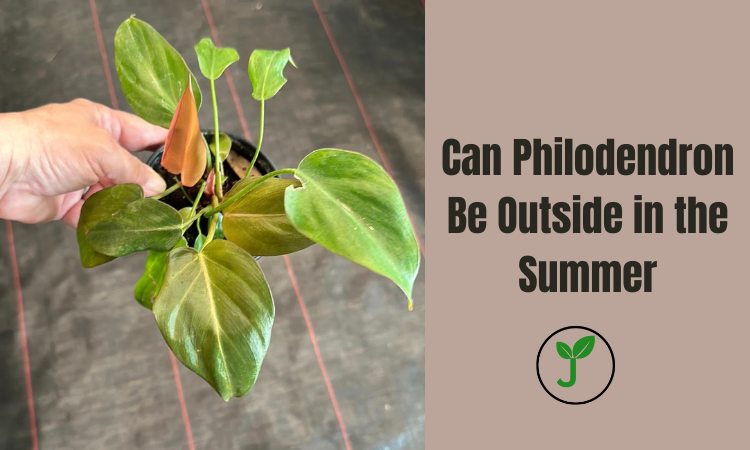Philodendrons are popular houseplants known for their lush, green foliage and easy-going nature. But as summer approaches, many plant enthusiasts wonder, “Can philodendron be outside in the summer?” The answer is a resounding yes! With the right care, your philodendron can enjoy the summer sun and fresh air. In this guide, we’ll explore everything you need to know to make this transition smooth and successful.
Don’t forget to check out our collection of plant pots, pruning shears, and fertilizers to ensure your philodendron gets the best care possible: Shop Now.
Can Philodendron Be Outside in the Summer?
Yes, philodendrons can be outside in the summer. With proper care, they thrive in the warm, humid conditions that mimic their native tropical environments. However, there are several key factors to consider to ensure your plant’s health and longevity.
Benefits of Keeping Philodendrons Outside in the Summer
Improved Growth
Exposing your philodendron to natural sunlight can boost its growth. The increased light intensity outdoors helps the plant produce more energy, resulting in lush, vibrant foliage.
Better Air Circulation
Outdoor conditions offer better air circulation compared to indoor environments. This helps prevent diseases and promotes overall plant health.
Natural Humidity
Summer’s natural humidity is ideal for philodendrons. It mimics their native tropical habitats, ensuring they stay hydrated and healthy.
Preparing Your Philodendron for Outdoor Life
Acclimation Process
Start Slow: Gradually introduce your philodendron to outdoor conditions. Begin by placing it in a shaded area for a few hours a day, then slowly increase exposure to sunlight over a week or two.
Choosing the Right Spot
Shade is Key: While philodendrons enjoy bright light, direct sunlight can scorch their leaves. Choose a spot that receives dappled sunlight or morning sun and afternoon shade.
Watering Your Outdoor Philodendron
Consistent Moisture
Regular Watering: Philodendrons require consistent moisture. Water your plant when the top inch of soil feels dry. Outdoor plants may need more frequent watering due to higher evaporation rates.
Avoid Overwatering
Good Drainage: Ensure your plant pot has drainage holes to prevent waterlogging. Overwatering can lead to root rot, a common issue with philodendrons.
Fertilizing for Optimal Growth
Balanced Fertilizer
Monthly Feeding: Use a balanced, water-soluble fertilizer once a month during the growing season. This provides essential nutrients for robust growth.
Organic Options
Compost and Mulch: Consider organic options like compost or mulch to enrich the soil naturally.
Protecting Your Philodendron from Pests
Common Outdoor Pests
Inspect Regularly: Watch out for common pests like aphids, spider mites, and mealybugs. Regular inspection helps catch infestations early.
Natural Remedies
Neem Oil: Use neem oil or insecticidal soap to treat pests. These are effective and safe for your plant.
Weather Considerations
Temperature Tolerance
Ideal Range: Philodendrons thrive in temperatures between 65-85°F (18-29°C). Avoid exposing them to temperatures below 55°F (13°C).
Rain Protection
Sheltered Spot: Heavy rain can damage philodendron leaves. Place your plant in a sheltered spot or provide temporary cover during storms.
Caring for Different Types of Philodendrons

Vining Varieties
Support Structures: Vining philodendrons like the Philodendron hederaceum benefit from trellises or other support structures to climb on.
Upright Varieties
Sturdy Pots: Upright varieties like the Philodendron ‘Hope’ need sturdy pots to support their weight and prevent tipping.
Table: Philodendron Outdoor Care Guide
| Aspect | Care Tip |
|---|---|
| Light | Dappled sunlight or morning sun |
| Watering | Regular, consistent moisture |
| Fertilizing | Monthly with balanced fertilizer |
| Pests | Inspect regularly, use neem oil |
| Temperature | 65-85°F, avoid below 55°F |
| Humidity | High, natural summer humidity |
| Rain Protection | Sheltered spot or temporary cover |
| Support | Trellises for vining varieties |
| Pot | Good drainage, sturdy for upright |
Bringing Your Philodendron Back Inside
Timing
Before the Cold Hits: Bring your philodendron indoors before temperatures drop below 55°F (13°C).
Pest Inspection
Clean and Inspect: Before bringing your plant inside, inspect it for pests and clean the leaves to prevent introducing any bugs to your home.
FAQs
Can philodendron be outside in the summer?
Yes, with proper care, philodendrons can thrive outdoors in the summer.
How much sunlight does a philodendron need outside?
Philodendrons prefer dappled sunlight or morning sun with afternoon shade.
How often should I water my outdoor philodendron?
Water when the top inch of soil feels dry, usually more frequently than indoor plants.
What temperature is too cold for a philodendron?
Avoid exposing your philodendron to temperatures below 55°F (13°C).
How do I protect my philodendron from pests outdoors?
Regularly inspect your plant and use natural remedies like neem oil to treat any infestations.
Can I use regular garden soil for my outdoor philodendron?
It’s best to use a well-draining potting mix designed for tropical plants to prevent waterlogging.
Conclusion
Transitioning your philodendron to an outdoor environment for the summer can be highly beneficial for its growth and overall health. Just remember to acclimate it slowly, provide adequate water and shade, and protect it from pests and extreme weather. By following these tips, your philodendron will thrive and bring a touch of tropical beauty to your outdoor space.
Don’t forget to check out our range of plant care products to keep your philodendron looking its best: Shop Now.
